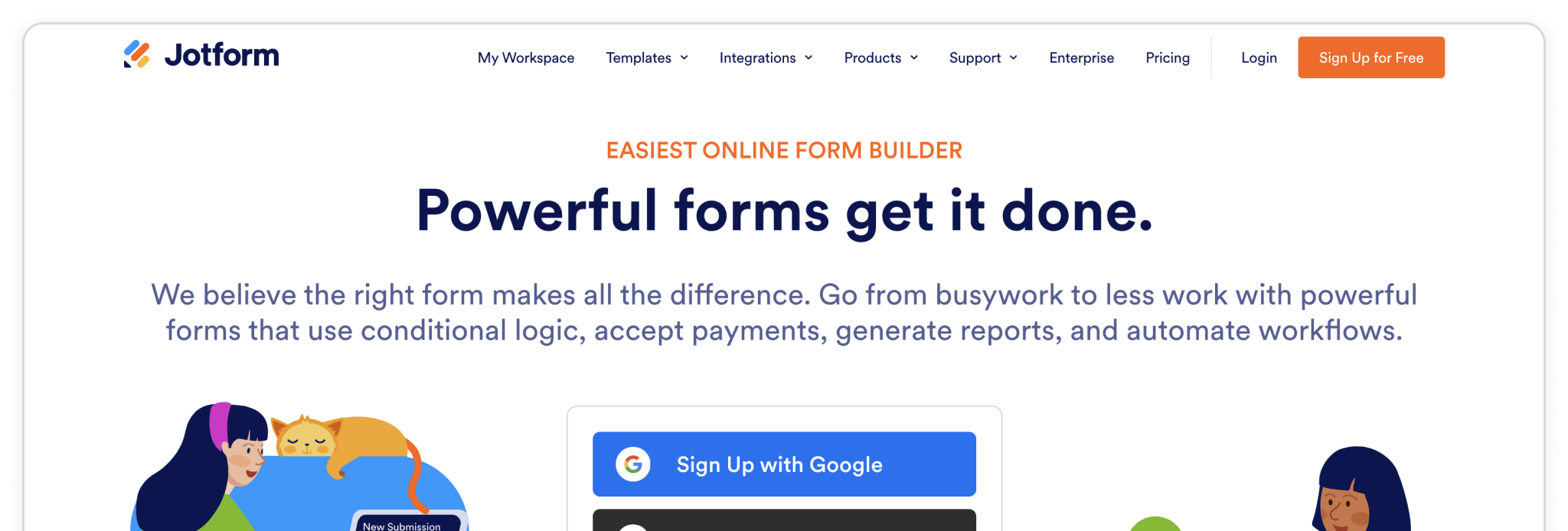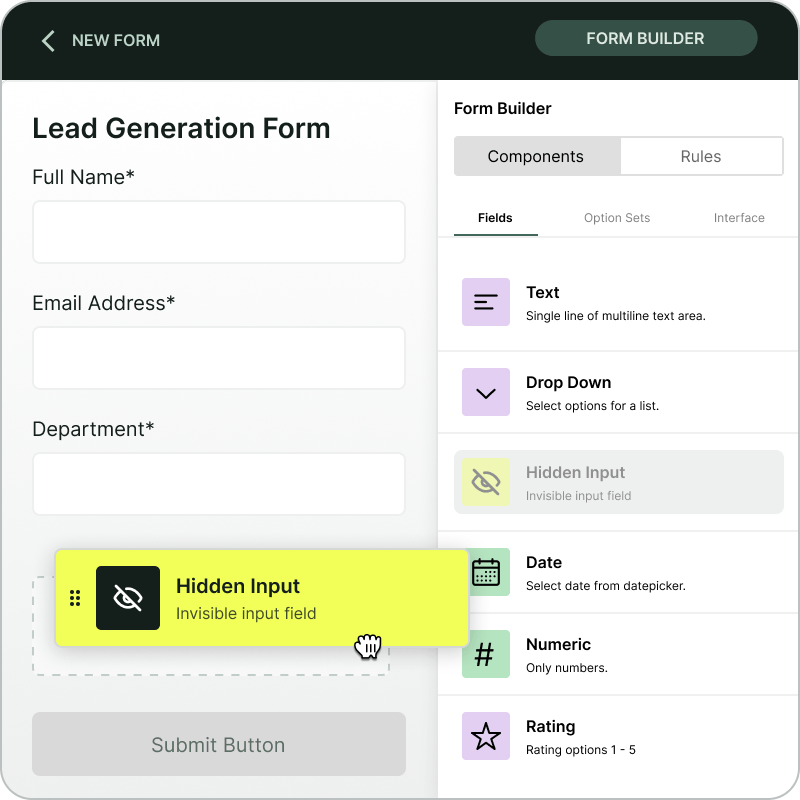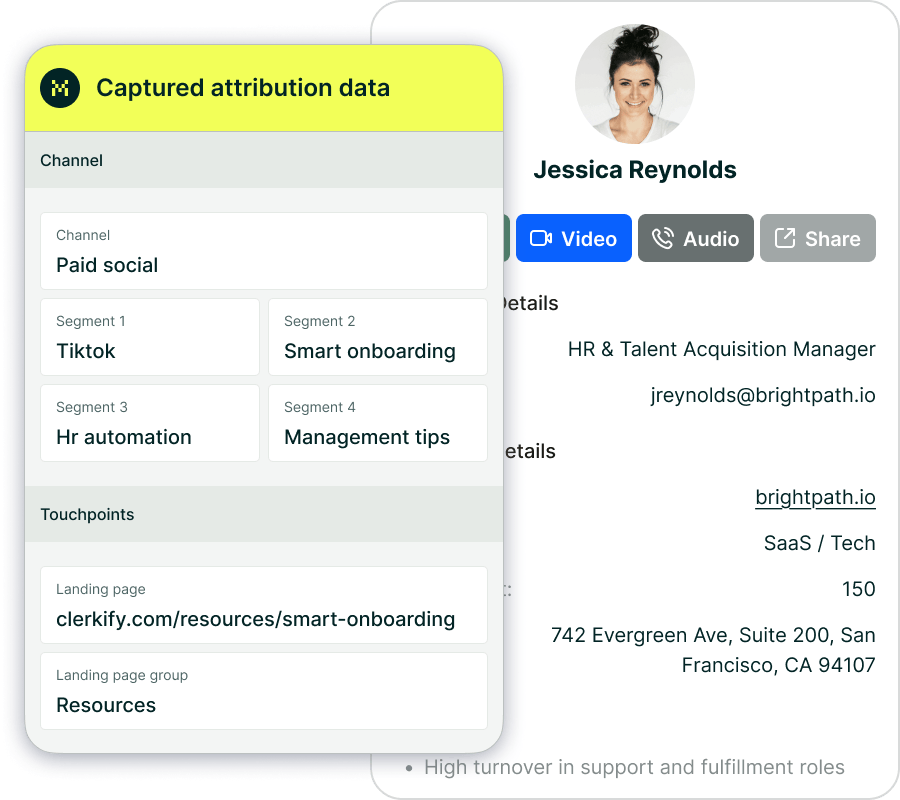Which Tool Tracks Jotform Submissions End-to-End with First-Touch Attribution?


Madlitics tracks every Jotform submission end-to-end by automatically capturing UTM parameters, click IDs (like gclid and fbclid), and referrer data when someone visits your site. It passes that data straight into your Jotform submissions through Madlitics Fields, giving you a clear, consistent record of where each lead came from — without dashboards or extra software.
Whether your form is embedded via iframe, lightbox, or full source code, Madlitics captures attribution data seamlessly and attaches it to every submission.
Jotform makes it easy to collect leads — but like most form builders, it stops short of telling you where those leads actually came from. Once a visitor fills out a form, that valuable marketing context is lost.
Without attribution data, you can’t see which campaigns are performing or which channels are wasting budget. The result? Incomplete reports and missed opportunities to double down on what works.
Marketers often try to solve this by manually adding hidden fields or copying UTMs into spreadsheets, but those methods break easily across multiple embeds or form types. Madlitics fixes this by working directly inside your Jotform setup — automatically populating campaign data for every submission, regardless of how the form is embedded.
Madlitics acts as a lightweight attribution layer that runs quietly behind the scenes. When someone lands on your site, it records the visitor’s first-touch data — UTMs, click IDs, referrer, and landing page — and stores that information locally.
When the visitor fills out a Jotform, Madlitics injects that attribution data into the Madlitics Fields inside the form. From there, it flows automatically into your CRM, email platform, or analytics system, giving you a complete picture of each lead’s journey.
Madlitics doesn’t replace Jotform or add another dashboard to manage — it simply ensures your existing submissions include full, structured attribution data that’s ready to use across your tools.
Getting started with Madlitics on Jotform is quick:
Add the lightweight Madlitics script to your site (manually or through Google Tag Manager), then include seven Madlitics Fields in your Jotform. These fields capture channel, campaign, and landing-page data when a visitor submits your form.
Because Jotform supports multiple embed types, Madlitics automatically detects and adapts to each one:
data-madlitics-iframe="true" to your form iframe tag, and Madlitics will handle the rest.To confirm setup, submit a test form and check that the Channel and Landing Page fields are populated automatically.
You can find detailed, platform-specific steps in the Jotform integration guide, learn more about field structure in the Madlitics Fields article, and follow best practices for validation in the Madlitics testing overview.
Does Madlitics work with iframe or lightbox Jotform embeds?
Yes. Madlitics was designed to support Jotform’s flexible embed options, including iframe and lightbox forms. Once your site includes the Madlitics script, it automatically detects these embedded forms and passes attribution data to the fields inside them.
Can I track paid ad performance, like Google Ads or Facebook campaigns?
Absolutely. Madlitics captures click IDs (gclid, fbclid, msclkid) and UTM parameters automatically. When a visitor converts through a Jotform, that campaign data is recorded directly in the submission — no manual tagging required.
What if someone fills out my form multiple times?
Madlitics uses first-touch attribution by default, meaning it attributes each submission to the visitor’s original source. That prevents newer visits from overwriting the original campaign data and keeps your reporting consistent.
Can I add the script through Google Tag Manager?
Yes. Many Jotform users install Madlitics through GTM. Just make sure the tag fires in the site’s <head> so attribution data is captured before the form loads.
Other attribution tools can collect UTM data, but they often break when forms are embedded in iframes or loaded dynamically. Madlitics is built to handle these real-world cases — from Jotform’s lightbox pop-ups to full source code embeds.
Unlike dashboard-driven products, Madlitics is form-first. It captures attribution data directly within your existing Jotform submissions, ensuring consistency across all embed types and integrations. There’s no need for plugins, external APIs, or separate analytics systems — just accurate, reliable data that travels with your leads wherever they go.

https://yoursite.com/?utm_source=linkedin&utm_medium=paidsocial&utm_campaign=q1_promo

Start capturing end-to-end attribution data in your Jotform submissions.
Follow our integration guide and see how easily Madlitics connects your marketing channels to real lead data.
Madlitics installs in minutes, runs silently in the background, and gives you the clarity to see exactly which ads, campaigns, and channels are driving conversions — even through iframe or lightbox embeds.



